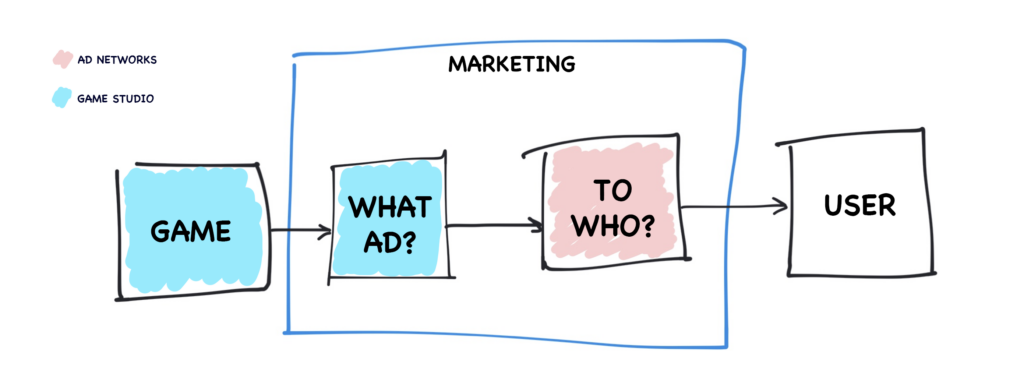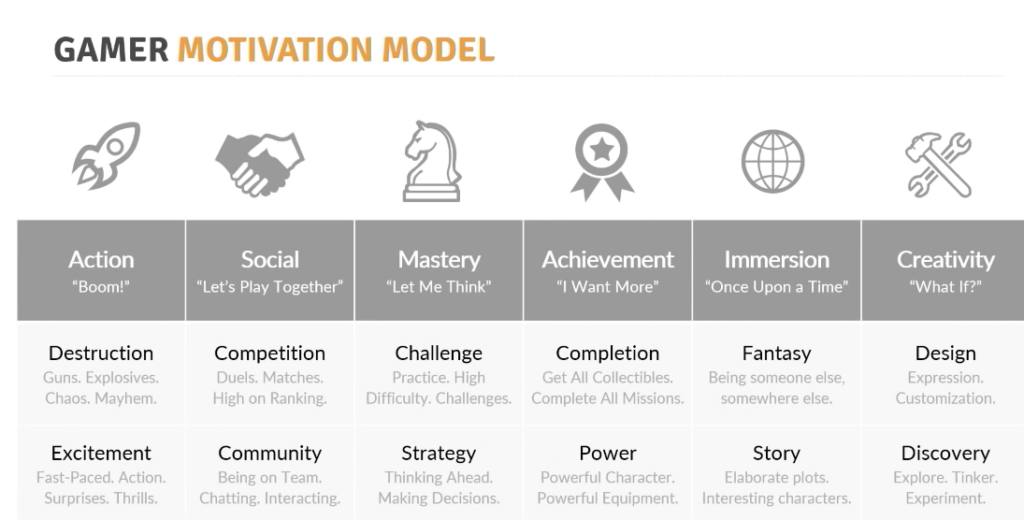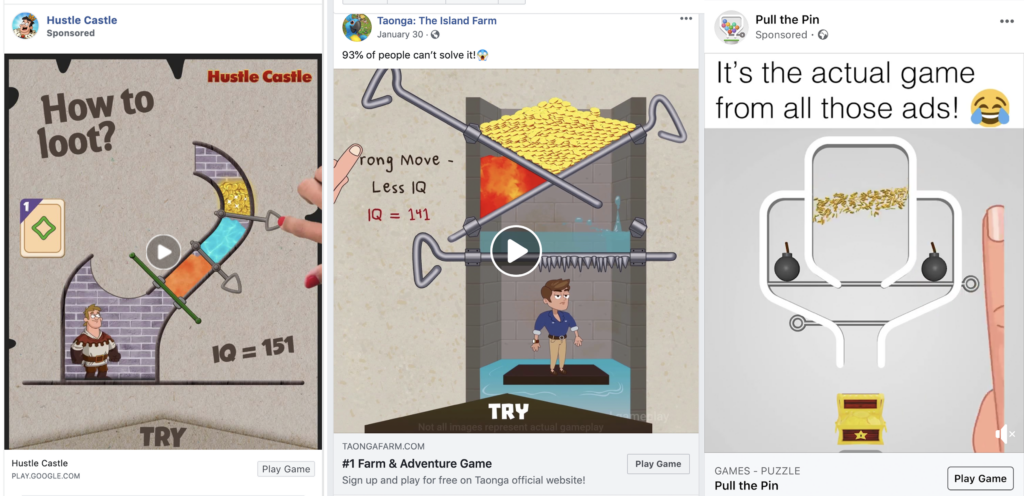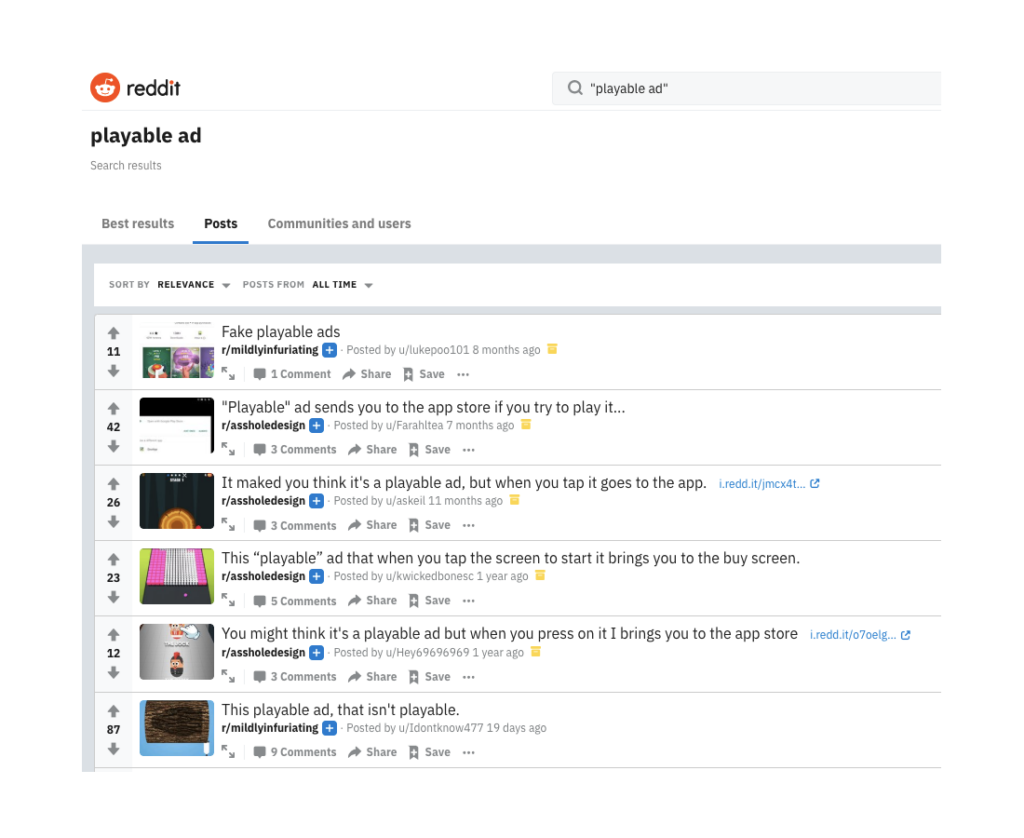· 13 min read
Why Hypercasual Can’t Sustain the Growth of Playables: Part Two
Adam Stevens
Chief Product Officer at Luna Labs
Editor’s Note: This article was originally published by Adam Stevens, Chief Product Officer at Luna Labs. You can read the original version of the second of this two-part series here.
TL;DR
Over the past two years, hypercasual studios found their way to make playable ads drive significant results. In doing so, they propelled this format to the main stage.
However, the methods they found to be successful for this format cannot simply be “replicated” in other game genres — these studios must now find their own paths for success. And as playable ads evolve, studios need to also overcome some additional challenges, for the format to continue its growth and significance in the ecosystem.
Creatives didn’t suddenly become important — for many years, the quality of the creatives you produce as well as your ability to analyse results and improve have been integral to the success of any game studio.
What has changed, is that creatives are quickly becoming one of the few levers a studio has left to stand out, optimise and drive results. In fact, when it comes to campaign optimisation… creatives are all we have left.
It’s an exaggerated statement of course, but it conveys a very important message. Whilst the need for quality creatives has not changed, there has been a gradual removal of controls, and therefore a need for bespoke campaign targeting/optimisation for mobile game advertisers. Google and Facebook have been deepening their moats by turning vast amounts of data into advanced prediction models, but notably, other leading performance networks are also becoming stronger in this area.
And so the role of the marketing team is changing. Although new skills like audience management and bidding strategies will quickly fill in the gaps, much of the manual work is also quickly disappearing.
Of course, a change like this is a good thing; if something can be automated to free up people’s time to have an impact elsewhere and unlock new creative opportunities, then it should. But even in the midst of this change, there remain two fundamental considerations, which still puts control in the hands of the game creators:
- What is the game you are building?
- Which creatives will you deliver to users?

It’s important to call out that ad networks are also starting to take control of the creative. The (proven) theory being that controlling both of these variables can lead to better results; data can flow both ways, and the ability to alter each side of the equation can unlock new potential.
But even then, the creative production sits in the hand of creators, albeit embellished with data or as part of a different company. We can hypothesise about how both of the above can also be automated, yet it will only ever be to a certain degree. The power of human creativity is unique, and there will always be a place for it at the center of the gaming industry.
With this context, creatives are more top-of-mind for UA teams than ever before, and so is creative-differentiation; playable ads are an important part of this strategy. It’s no longer a question of “Do I need playables” but “How can I leverage this format, and what does that experience look like?”
Although hypercausal may have cracked this and have leveraged the format to contribute towards their growth, the majority of the gaming ecosystem has yet to follow. Data from a recent PG article only highlights this:
…in 2019 hypercasual generated about 5% of the total revenue from mobile games and 12.5% of the installs, but took 38% of the total pie for ad revenue and 76.4% of the install growth.
And the reality is, hypercasual can only take the format so far, and these studios are facing their own challenges as growth and IPMs have started to flatten.
Playable Growth — what has to happen?
Here are 5 things Luna believe will/must happen in order to sustain and elevate the growth of the playable ad format in 2020 and beyond. Oh, and there’s a wild card prediction for a trend which could appear along the way, at the end.
1. Game Studios must use playables to tap into the motivators that excite their target audience
Playable ads present a unique opportunity for advertisers; placing users in control of the experience and outcomes in front of them. Because of this two-way engagement model, and unlike other (passive) formats, studios are then able to create playables that trigger motivating characteristics that resonate with their target audience (all in ~30s of HTML).
And… hypercasual games have been using playables for exactly this…knowingly or not!
As we discussed in part one, the simplicity of these games does naturally lend itself to the format as there aren’t as many technical and creative barriers as usual (“just use level one!”). But we believe the real reason why hypercasual was able to find success with playable ads, was because they were able to provide experiences within the ads that played to the motivators which keep users coming back to these games time and time again. Both ads and games are simple, easy to understand, satisfying, masterable… and are designed to create the itch that hypercasual users love to scratch.
Other genres must do the same.
Consider a mid-core game. Creating a playable ad to represent the look and feel of game experience is challenging. There are multiple storylines, game mechanics, player progression, achievements etc. How can you put all of this into a playable ad? The short answer — you can’t. And, even if you could, who’s to say it would deliver the results you require in a 20–25s experience?
Instead, playable ads should be used to tap into the motivations that influence and retain gamers in the first place. The diagram below is an example of research into this area. It shows the “12 unique motivators” for gamers, from Quantic Foundry (see the article for more).

What motivates gamers: https://medium.com/ironsource-levelup/what-motivates-gamers-ccbffe9180c0
Put simply, if your audience craves a challenge and an elaborate storyline, then make sure your playable ad creates such an experience. Studios must reject the urge to take a snippet of the game and condense it into a playable.
But, here, of course, comes the challenge.
We’ve seen a number of game studios starting to adopt this way of thinking, but ending up with ads which ‘look nothing like the game’. It’s a trend that has received a lot of attention and even caused a debate from both sides of the fence.

Video ads using the same “hook” for different game types.
The above example is using videos, but you get the point. These creatives move to either side of the line on a regular basis.
And this tactic may work i.e. drive downloads, but you will encounter increasing CPIs and narrowing of your audience fairly quickly. Furthermore and more worryingly, you can alienate your target users who reject such methods, or find yourself on this YouTube channel.
As a way to achieve growth, playable ads can be used to create experiences that play to gamers’ motivations. But, to be fully sustainable, game studios must work to find a balance of this whilst staying true to the game. It’s not easy, but this is where they must evolve, and where the highest rewards are.
2. Game studios will bring playable ad production in-house
As mentioned in the opening, creatives will only become more important in 2020. Today, it is typical for a game studio to manage their video ad production in-house with fully dedicated specialists. Although playables have yet to reach such adoption, they have been largely outsourced to agencies or managed by the networks.
Whilst this model has helped propel playables, to continue the growth for even more studios (both in genre and size) and provide the control needed for creative innovation, playable production must move in-house.
Of course, some studios have already made this move. And despite being in the minority, it’s safe to say that they are benefiting from the ability to retain control of the quality and speed of iteration, testing concepts and adapting to feedback from players in near real-time.
As this movement grows and more studios find value in playables, we will see services and technologies offer ways to enable better workflows for their production. And as these solutions improve, more studios will find it financially and technically beneficial to adopt them, and the virtuous cycle will pick up the pace.
As a sub-point to this, we believe that there will be an increase in headcount in these companies for what may be called “Marketing Developers” — someone responsible for pushing the boundaries when developing creatives using their technical abilities, whilst sitting within or with a dotted-line to the marketing department. This link between developers and marketing is vital for maximising the success of in-house creative solutions.
3. Dynamic Playable Optimisation will be used to create the ‘perfect ad’
Playable ads, which are built-in HTML5 and allow for continuous engagement, offer a unique opportunity for marketers to capture detailed analytics about user experience. This data can help them understand and improve the user journey.
Here’s an example of what a “simple” analysis might look like for a playable ad.

Without analytics, you will only see the events in green (ad loaded and click), with no idea what happens in between. If the user doesn’t click, you simply see the loaded event — where did they drop off?
It’s quickly obvious why this is tremendously valuable. Once you have the data, you can optimise for key events within the flow (load time, time to engage, bounce back rate etc) as you adjust parameters and dynamics within the ad. At Luna, we’ve already seen the benefits our partners have had by using Luna Insights playable data to optimise ad flows and significantly improve performance. And now through automation, they can focus their creative talents elsewhere and allow AI to do the heavy lifting.
Dynamic optimisation will be a key trend in 2020. It will start with a wide net, automatically changing elements of the ad to serve in a campaign, but end with user-targeted ad variations. Platforms will be able to create variations of the playable in real-time, guided by data, and adapt the experience based on the user. Eventually, the data from a playable ad could influence the onboarding experience for users in-game too, adapting to the preferences they have demonstrated before downloading.
Such progress will take collaboration between studios, networks and playable tech layers, but the results will be worth it.

4. Standardisation and Policy
A short but fundamental point — ad networks and providers will need to work to create a common group of guiding principles for playable ads. In 2018/19, we saw a lot of trends in hypercasual, which no doubt hurt the ecosystem as a whole but may have benefited that advertisers, publishers, and networks.
Fake playables (gifs), trick-to-click mechanics, false gameplay… the trends ebb and flow as marketers try to capitalise on them before they stop working.

We already see IPMs for hypercasual flattening and this is, of course, due to a multitude of reasons. But we can say with certainty that what worked once, will not always work.
We predict that networks will start to tighten the belt on what is allowed within a playable; this may be alone or as part of a wider stance. Facebook as an example, is already a lot stricter with their policies for playable ads than others, as they optimise for long term sustainability. The rest of the ecosystem must follow.
5. Game studios will unlock additional value with playables through concept testing
By committing to playable ad technology and know-how, studios will start to look for more areas to create value from their investment and skills. As we’ve pointed out, playable ads present a unique opportunity to test whilst capturing rich data. Studios will start to leverage this not only to improve their ad performance for existing games, but to analyse potential new titles and derive trends and correlations for new ideas.
Marketability tests today consist of videos on Facebook. Studios understand the metrics, and it works well. But, how many games are left on the table because of a poor creative? How many games, with a slight tweak (the main character, game art style, one mechanic becoming another), would in fact pass the high bar to move forward?
By building a base playable scene, it will be possible to test concepts as unique creative permutations. Game developers can then get results from the performance of each creative and modify their game design strategy accordingly; if the audience responds more favourably to a car, then put a car in the game!

Game variables can be combined to rapidly test new ideas.
Playable ad strategy will become more lucid. Technology will enable studios to bring control in-house for quick iterations and creative explorations. Automation will allow these studios to offer up variables to be tested with no manual work. As a result, all of these combined will provide studios with a new landscape for creative testing through playables.
And finally, a wild card…
Video and playable ads merge to create a new trend
As studios adopt in-house technologies, we will see new creative trends and techniques. These will be born out of the necessity to move as fast as the need to innovate and constantly refresh ideas.
And so, the line between creative formats will begin to blur.
Developers will use a combination of the technologies needed to best create their desired experiences.
We are already seeing developers use native UI in Unity on top of video sequences to create quick and effective launch-playables for their games. Building upon this, developers will start to use playable scenes to capture dynamic user inputs (moving, aiming, tapping) and then transition seamlessly into a video to demonstrate more challenging effects.
Of course, everything could be achieved in a playable, but if the user is simply watching the results of their initial input, video can be nearly as effective.
Playable ads have every chance to redefine how game studios approach marketing. These learnings will propagate outwards quickly – not only within the gaming communities but also beyond, as other verticals will be able to see the opportunities this format can unlock.
Here’s part one of this series, in case you missed it.